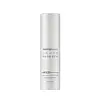What's inside
What's inside
 Key Ingredients
Key Ingredients

 Benefits
Benefits

 Concerns
Concerns

 Ingredients Side-by-side
Ingredients Side-by-side

Bifida Ferment Lysate 42%
Skin ConditioningGalactomyces Ferment Filtrate 21%
HumectantButylene Glycol
HumectantMethyl Gluceth-20
HumectantWater
Skin ConditioningNiacinamide
SmoothingPEG-90
Humectant1,2-Hexanediol
Skin ConditioningGlycerin
HumectantSqualane
EmollientAlteromonas Ferment Extract
Skin ConditioningSilk Extract
Skin ConditioningGoat Milk Extract
Sodium Hyaluronate
HumectantPanthenol
Skin ConditioningAdenosine
Skin ConditioningGlycereth-26
HumectantXanthan Gum
EmulsifyingPolyglyceryl-3 Distearate
EmulsifyingGlyceryl Stearate Se
EmulsifyingGlyceryl Stearate Citrate
EmollientPolyglyceryl-3 Methylglucose Distearate
EmulsifyingCarbomer
Emulsion StabilisingTromethamine
BufferingEthylhexylglycerin
Skin ConditioningCaprylyl Glycol
EmollientTropolone
Skin ConditioningDisodium EDTA
Bifida Ferment Lysate 42%, Galactomyces Ferment Filtrate 21%, Butylene Glycol, Methyl Gluceth-20, Water, Niacinamide, PEG-90, 1,2-Hexanediol, Glycerin, Squalane, Alteromonas Ferment Extract, Silk Extract, Goat Milk Extract, Sodium Hyaluronate, Panthenol, Adenosine, Glycereth-26, Xanthan Gum, Polyglyceryl-3 Distearate, Glyceryl Stearate Se, Glyceryl Stearate Citrate, Polyglyceryl-3 Methylglucose Distearate, Carbomer, Tromethamine, Ethylhexylglycerin, Caprylyl Glycol, Tropolone, Disodium EDTA
Water
Skin ConditioningDibutyl Adipate
EmollientSynthetic Wax
AbrasiveCaprylic/Capric Triglyceride
MaskingHelianthus Annuus Seed Oil
EmollientPolyglyceryl-2 Triisostearate
EmulsifyingButylene Glycol
HumectantVinyldimethicone
Octyldodecanol
EmollientTocopheryl Acetate
AntioxidantOzokerite
Emulsion StabilisingGlycerin
HumectantPolyethylene
AbrasiveVinyl Dimethicone/Methicone Silsesquioxane Crosspolymer
Polyglyceryl-4 Diisostearate/Polyhydroxystearate/Sebacate
EmulsifyingOryza Sativa Extract
AbsorbentStellaria Media Extract
Skin ConditioningCentella Asiatica Extract
CleansingCeramide NP
Skin ConditioningCeramide As
Skin ConditioningCeramide AP
Skin ConditioningCeramide Ns
Skin ConditioningCeramide EOP
Skin ConditioningCholesterol
EmollientLactobacillus Ferment
Skin ConditioningHydrogenated Lecithin
EmulsifyingOryza Sativa Bran Oil
EmollientSodium Chloride
MaskingMicrocrystalline Wax
Emulsion StabilisingBisabolol
MaskingLauryl Polyglyceryl-3 Polydimethylsiloxyethyl Dimethicone
Skin ConditioningPolyglyceryl-5 Polyricinoleate
EmulsifyingGlyceryl Caprylate
EmollientCaprylyl Glycol
Emollient1,2-Hexanediol
Skin ConditioningEthylhexylglycerin
Skin ConditioningStearalkonium Hectorite
Gel FormingPropylene Carbonate
SolventDipropylene Glycol
HumectantTocopherol
AntioxidantGlyceryl Stearate
EmollientWater, Dibutyl Adipate, Synthetic Wax, Caprylic/Capric Triglyceride, Helianthus Annuus Seed Oil, Polyglyceryl-2 Triisostearate, Butylene Glycol, Vinyldimethicone, Octyldodecanol, Tocopheryl Acetate, Ozokerite, Glycerin, Polyethylene, Vinyl Dimethicone/Methicone Silsesquioxane Crosspolymer, Polyglyceryl-4 Diisostearate/Polyhydroxystearate/Sebacate, Oryza Sativa Extract, Stellaria Media Extract, Centella Asiatica Extract, Ceramide NP, Ceramide As, Ceramide AP, Ceramide Ns, Ceramide EOP, Cholesterol, Lactobacillus Ferment, Hydrogenated Lecithin, Oryza Sativa Bran Oil, Sodium Chloride, Microcrystalline Wax, Bisabolol, Lauryl Polyglyceryl-3 Polydimethylsiloxyethyl Dimethicone, Polyglyceryl-5 Polyricinoleate, Glyceryl Caprylate, Caprylyl Glycol, 1,2-Hexanediol, Ethylhexylglycerin, Stearalkonium Hectorite, Propylene Carbonate, Dipropylene Glycol, Tocopherol, Glyceryl Stearate
 Reviews
Reviews

Ingredients Explained
These ingredients are found in both products.
Ingredients higher up in an ingredient list are typically present in a larger amount.
1,2-Hexanediol is a synthetic liquid and another multi-functional powerhouse.
It is a:
- Humectant, drawing moisture into the skin
- Emollient, helping to soften skin
- Solvent, dispersing and stabilizing formulas
- Preservative booster, enhancing the antimicrobial activity of other preservatives
Butylene Glycol (or BG) is used within cosmetic products for a few different reasons:
Overall, Butylene Glycol is a safe and well-rounded ingredient that works well with other ingredients.
Though this ingredient works well with most skin types, some people with sensitive skin may experience a reaction such as allergic rashes, closed comedones, or itchiness.
Learn more about Butylene GlycolCaprylyl Glycol is a humectant and emollient, meaning it attracts and preserves moisture.
It is a common ingredient in many products, especially those designed to hydrate skin. The primary benefits are retaining moisture, skin softening, and promoting a healthy skin barrier.
Though Caprylyl Glycol is an alcohol derived from fatty acids, it is not the kind that can dry out skin.
This ingredient is also used as a preservative to extend the life of products. It has slight antimicrobial properties.
Learn more about Caprylyl GlycolEthylhexylglycerin (we can't pronounce this either) is commonly used as a preservative and skin softener. It is derived from glyceryl.
You might see Ethylhexylglycerin often paired with other preservatives such as phenoxyethanol. Ethylhexylglycerin has been found to increase the effectiveness of these other preservatives.
Glycerin is already naturally found in your skin. It helps moisturize and protect your skin.
A study from 2016 found glycerin to be more effective as a humectant than AHAs and hyaluronic acid.
As a humectant, it helps the skin stay hydrated by pulling moisture to your skin. The low molecular weight of glycerin allows it to pull moisture into the deeper layers of your skin.
Hydrated skin improves your skin barrier; Your skin barrier helps protect against irritants and bacteria.
Glycerin has also been found to have antimicrobial and antiviral properties. Due to these properties, glycerin is often used in wound and burn treatments.
In cosmetics, glycerin is usually derived from plants such as soybean or palm. However, it can also be sourced from animals, such as tallow or animal fat.
This ingredient is organic, colorless, odorless, and non-toxic.
Glycerin is the name for this ingredient in American English. British English uses Glycerol/Glycerine.
Learn more about GlycerinWater. It's the most common cosmetic ingredient of all. You'll usually see it at the top of ingredient lists, meaning that it makes up the largest part of the product.
So why is it so popular? Water most often acts as a solvent - this means that it helps dissolve other ingredients into the formulation.
You'll also recognize water as that liquid we all need to stay alive. If you see this, drink a glass of water. Stay hydrated!
Learn more about Water